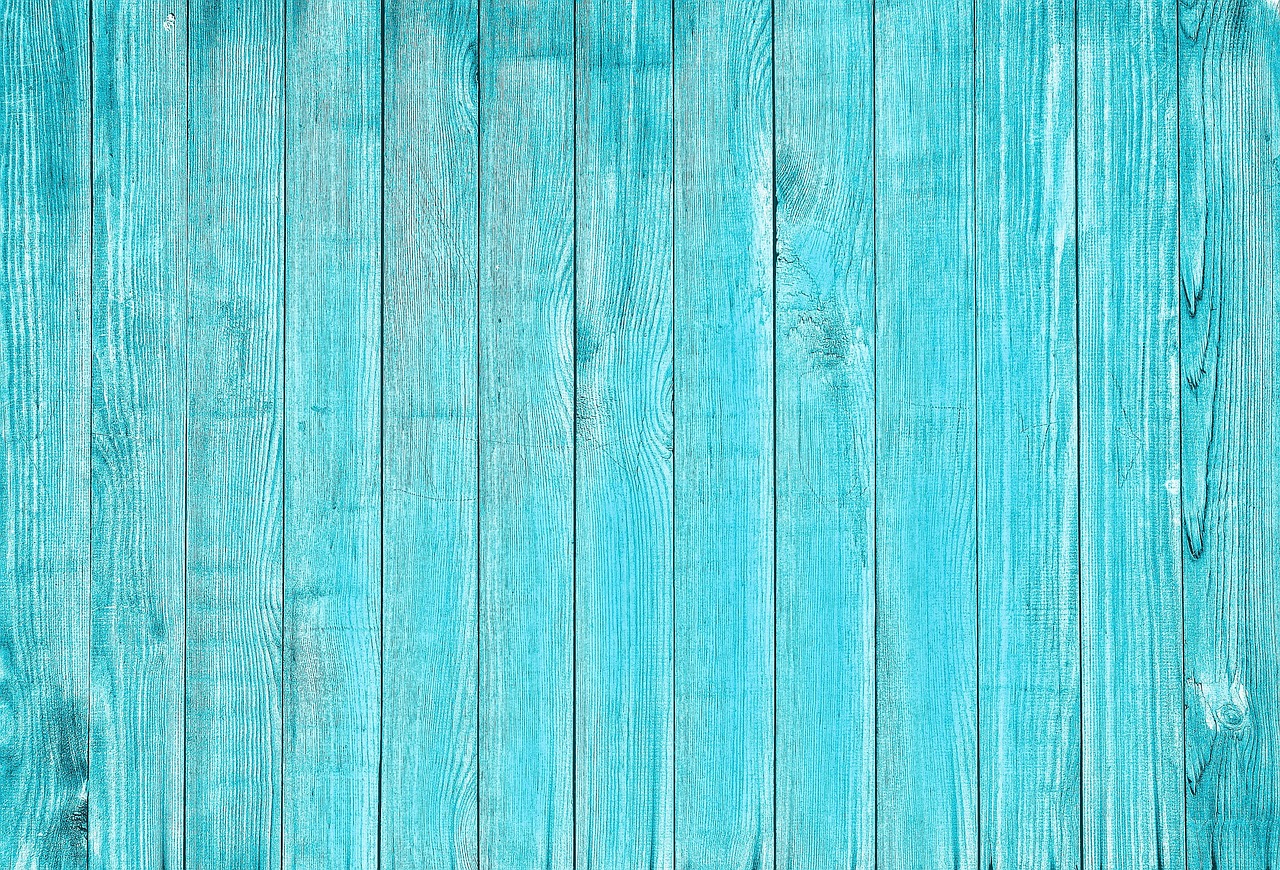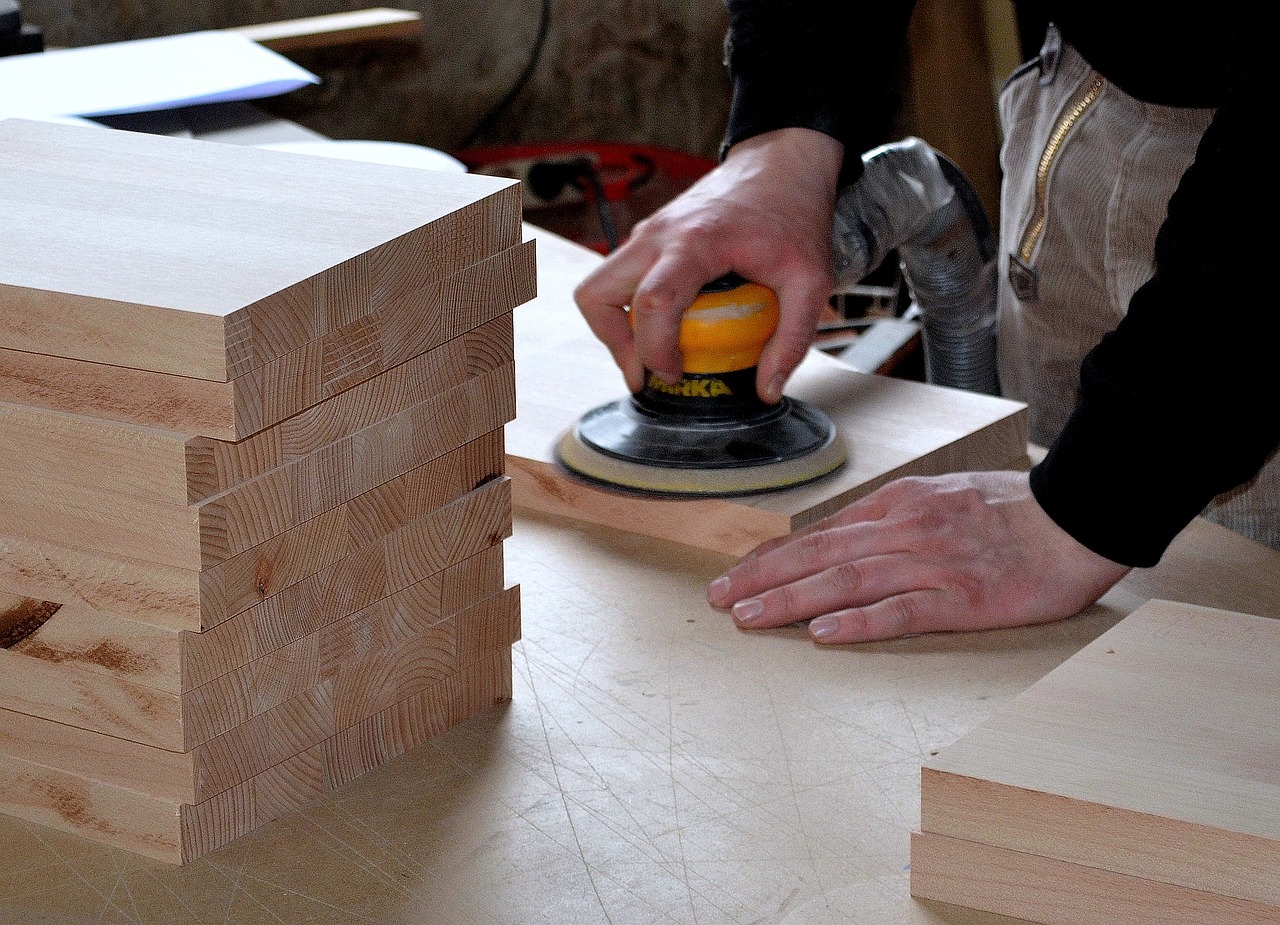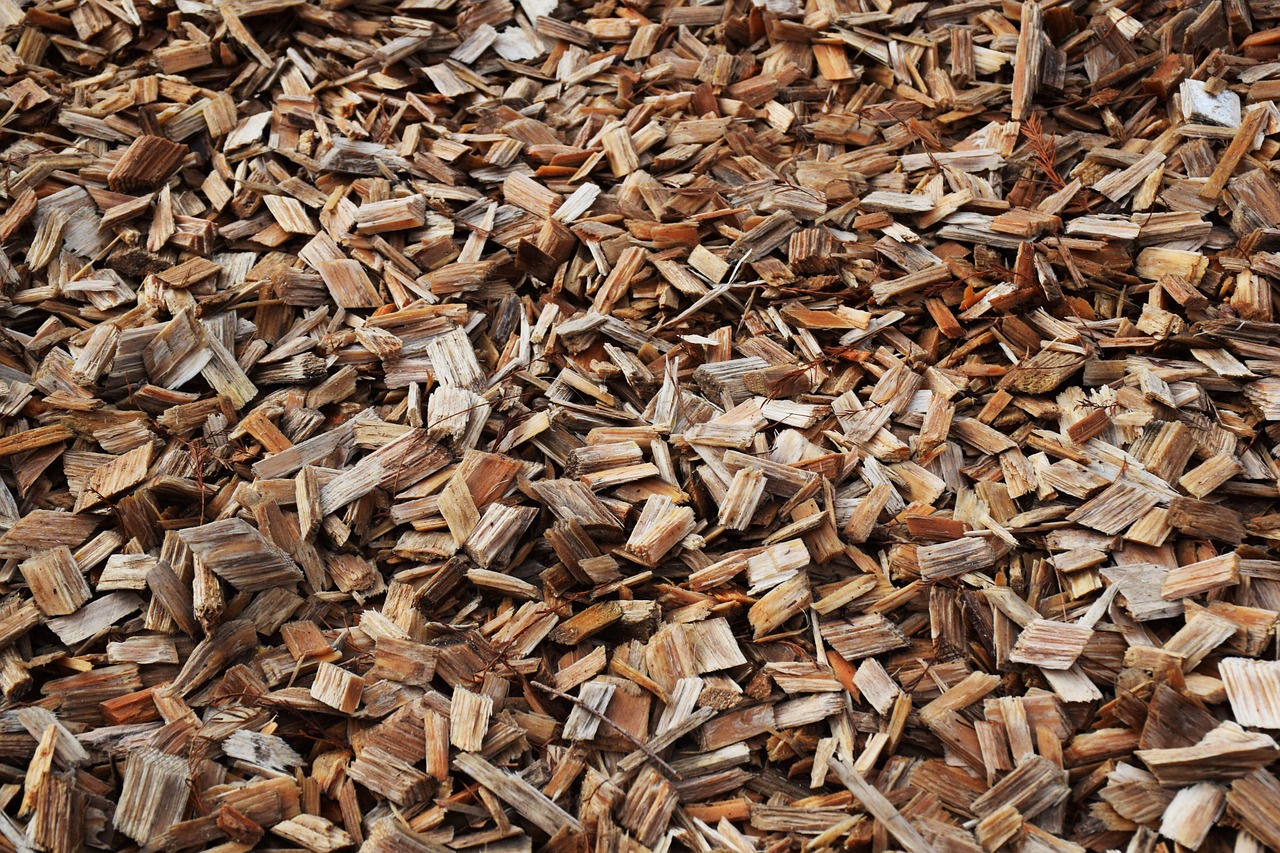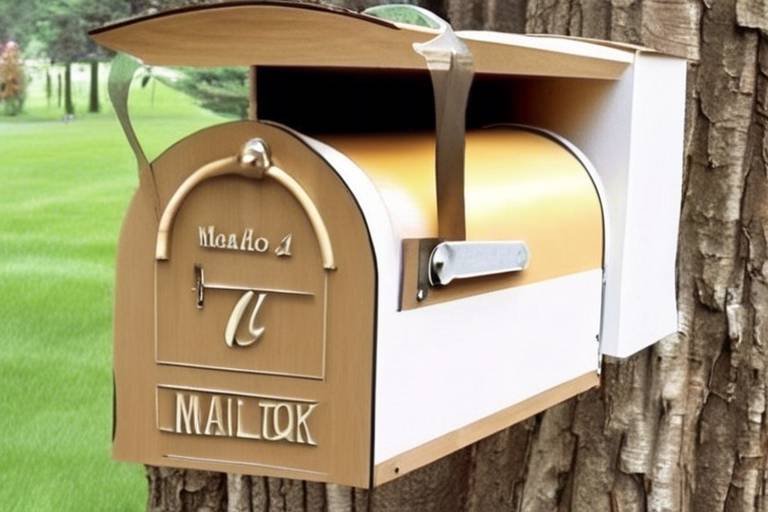How to Transform Scraps into Wood Art
Have you ever looked at a pile of wood scraps and thought, "What on earth can I do with these?" Well, you're not alone! Many of us see those leftover pieces as mere waste, but the truth is, they hold incredible potential for creativity and craftsmanship. In this article, we’ll dive into the world of transforming those seemingly useless bits of wood into stunning art pieces that not only showcase your skills but also promote recycling and sustainability.
Imagine walking into a room and being greeted by a beautiful wooden sculpture made entirely from scraps. It’s not just a conversation starter; it’s a testament to your ingenuity! Throughout this journey, we’ll explore innovative techniques, essential tools, and design inspirations that will help you unleash your inner artist. So, grab your safety goggles and let’s get started on this exciting adventure of turning scraps into masterpieces!
Before we jump into the fun stuff, it’s essential to understand the different types of wood you might be working with. Each wood type comes with its own unique characteristics—think of it as choosing the right ingredients for a recipe. For instance, hardwoods like oak and maple are known for their durability and beautiful grain patterns, making them perfect for art pieces that need to stand the test of time. On the other hand, softwoods like pine and cedar are lighter and easier to work with, which can be a huge plus for beginners.
Knowing the properties of various woods can significantly influence your artistic choices. For example, if you’re planning to create intricate carvings, a softer wood might be your best bet. On the flip side, if you want a sturdy piece that will last, opting for a hardwood is the way to go. In the table below, we summarize some common wood types and their characteristics:
| Wood Type | Characteristics | Best For |
|---|---|---|
| Oak | Durable, strong, beautiful grain | Furniture, sculptures |
| Pine | Lightweight, easy to carve | Decorative pieces, beginner projects |
| Cedar | Resistant to decay, aromatic | Outdoor art, garden decor |
| Maple | Hard, fine grain, smooth finish | High-quality furniture, detailed carvings |
No artist can create without their tools! Whether you’re a seasoned woodworker or just starting out, having the right tools is crucial for transforming wood scraps into art. Some essential tools include saws, chisels, sanders, and glue. Each tool serves a specific purpose, and knowing how to use them effectively will make your woodworking journey much smoother.
For beginners, a simple hand saw and a set of chisels can go a long way. As you gain more experience, you might want to invest in power tools like a jigsaw or a router, which can help you achieve more intricate designs. Remember, the right tools not only enhance your craftsmanship but also ensure your safety while working with wood.
Finding inspiration is key to creating beautiful wood art. Sometimes, all it takes is a walk in nature or browsing through art galleries to spark creativity. You can also explore online platforms like Pinterest or Instagram, where artists showcase their unique creations. Don't hesitate to draw from various sources—nature, architecture, or even abstract concepts can lead to stunning designs.
As you gather ideas, keep a sketchbook handy to jot down your thoughts and visualize your projects. This practice will help you refine your ideas and develop a clear vision for your wood art. Remember, inspiration can strike at any moment, so stay curious and open-minded!
Proper preparation of wood scraps is essential for successful projects. Start by cleaning your scraps to remove any dirt or debris. A simple wash with soap and water followed by thorough drying will do the trick. Next, you’ll want to cut your wood into manageable sizes. This step is crucial as it allows you to visualize your design better and work more efficiently.
Once your pieces are cut, consider treating the wood with a wood conditioner or sealer. This not only protects the wood but also enhances its natural beauty. Proper preparation ensures that your finished art piece looks polished and professional.
Joining wood scraps effectively is vital for stability and aesthetics. There are several techniques you can use, depending on the look you want to achieve. Gluing is one of the most common methods; it’s straightforward and allows for seamless joins. Nailing can provide added strength, especially for larger pieces. Additionally, using dowels can create a clean and professional finish.
Experiment with different joining methods to see which works best for your project. The right technique can elevate your artwork from good to extraordinary!
Finishing techniques can dramatically enhance the appearance of your wood art. From staining to painting, the options are endless! Stains can bring out the natural grain of the wood, while paint can add a pop of color and personality. Sealing your artwork with a protective finish will ensure it lasts for years to come.
Don’t shy away from experimenting with different finishes. A unique blend of colors and textures can make your wood art truly stand out.
Once your art is complete, showcasing it properly can enhance its impact. Consider creative ways to display your wood art in various settings—whether it’s hanging on a wall, placed on a shelf, or even used as a functional piece of furniture. The way you present your work can influence how others perceive it, so think outside the box!
If you're interested in selling your creations, understanding the market is crucial. Research similar pieces to determine pricing, and consider your target audience. Utilize social media platforms to showcase your work and connect with potential buyers. Networking with local art shows and craft fairs can also help you gain visibility.
Remember, the journey of transforming scraps into wood art is not just about the end product; it's about the creativity and craftsmanship you put into each piece. So, embrace the process, and who knows? You might just discover a hidden talent!
- What types of wood are best for beginners? Softwoods like pine or cedar are great for beginners due to their ease of use.
- Can I use any type of glue for woodworking? It's best to use wood glue for strong and lasting bonds.
- How do I protect my finished wood art? Sealing your piece with a clear coat or varnish will protect it from damage.
- Where can I sell my wood art? Consider local craft fairs, online marketplaces, and social media platforms to reach potential buyers.

Understanding Wood Types
When it comes to transforming wood scraps into art, understanding the different types of wood is crucial. Each type of wood has its own unique characteristics, including grain patterns, density, and color, which can significantly influence the aesthetics and durability of your final piece. For instance, hardwoods like oak and maple are known for their strength and beautiful grain, making them ideal for intricate carvings and detailed projects. On the other hand, softwoods such as pine and cedar are easier to work with, allowing for quick projects and experimentation.
To give you a clearer picture, let’s break down some common wood types and their properties:
| Wood Type | Characteristics | Best Uses |
|---|---|---|
| Oak | Durable, strong, with a prominent grain | Furniture, flooring, cabinetry |
| Maple | Hard, fine grain, resistant to scratches | Countertops, cutting boards, cabinets |
| Pine | Soft, light, with a knotty appearance | Quick projects, outdoor furniture, crafts |
| Cedar | Lightweight, aromatic, resistant to decay | Outdoor projects, garden furniture, chests |
By familiarizing yourself with these wood types, you can make more informed choices that align with your artistic vision. For example, if you want to create a rustic piece that tells a story, using reclaimed barn wood could add a unique touch, complete with weathered textures and rich history. Alternatively, if you're aiming for a sleek, modern design, a smooth piece of birch or ash might be your best bet.
Moreover, consider the environmental impact of your choices. Sustainable wood sources not only contribute to eco-friendliness but also often come with their own unique charm. Using reclaimed wood or sourcing from certified sustainable forests can add an extra layer of meaning to your art.
In summary, understanding the various types of wood and their properties is essential for any woodworker looking to elevate their craft. As you embark on your journey of transforming scraps into stunning art, keep these characteristics in mind to ensure your creations are not only beautiful but also durable and impactful.

Essential Tools for Woodworking
When it comes to transforming wood scraps into stunning art, having the right tools is not just a luxury; it’s a necessity. Imagine trying to paint a masterpiece without the right brushes or colors. Similarly, in woodworking, the tools you choose can make or break your project. Whether you’re a seasoned woodworker or a curious beginner, understanding the essential tools can significantly enhance your crafting experience.
First and foremost, let’s talk about the basic hand tools. These are your bread and butter in woodworking. A good set of chisels is essential for carving and shaping wood, allowing you to add intricate details to your art. A reliable hand saw is also crucial; it gives you the precision you need to cut wood scraps into the desired shapes. Don’t forget about a sturdy hammer – it’s not just for nails; it can also help in assembling pieces with dowels or other joinery techniques.
Now, if you’re looking to elevate your woodworking game, investing in some power tools can be a game changer. A jigsaw, for instance, is perfect for making curved cuts and intricate designs. It’s like having a magic wand that transforms your ideas into reality! A circular saw is another must-have, as it allows for straight cuts through thicker pieces of wood, making it easier to work with larger scraps.
Beyond cutting tools, you’ll also need finishing tools. Sanding is a crucial part of the woodworking process, and having a quality sander can save you hours of tedious work. A random orbital sander is excellent for achieving a smooth finish on your art pieces, while hand sanding can help you reach those tricky spots. Finally, don’t overlook the importance of a good set of clamps. They hold your pieces together while the glue dries, ensuring that everything stays aligned and secure.
Here’s a quick overview of essential woodworking tools:
| Tool Type | Purpose |
|---|---|
| Hand Tools | Chisels, hand saws, and hammers for precise cutting and shaping. |
| Power Tools | Jigsaws and circular saws for more complex cuts and efficiency. |
| Finishing Tools | Sanders and clamps for achieving a smooth finish and secure assembly. |
As you gather your tools, remember that quality matters. Investing in high-quality tools can save you time and frustration in the long run. It’s often better to have a few reliable tools than a whole set of mediocre ones. Plus, as you develop your skills, you’ll find that certain tools will become your favorites, forming a personal toolkit that reflects your unique style and approach to woodworking.
In conclusion, the right tools can empower you to unleash your creativity and transform those humble wood scraps into breathtaking art pieces. So, whether you’re crafting a simple picture frame or an elaborate sculpture, make sure your toolbox is well-equipped. Happy woodworking!

Design Inspiration
Finding the right can be the spark that ignites your creativity when it comes to transforming wood scraps into stunning pieces of art. Whether you're a seasoned woodworker or a curious beginner, the world around you is filled with potential ideas just waiting to be discovered. Think about it: inspiration can come from the most unexpected places! From nature's intricate patterns to the vibrant colors of urban architecture, the possibilities are endless.
One great way to gather inspiration is to immerse yourself in the art community. Visiting local art galleries, craft fairs, or woodworking expos can expose you to various styles and techniques that might resonate with your artistic vision. Additionally, platforms like Pinterest and Instagram are treasure troves of creative ideas. You can follow artists who specialize in wood art and see how they transform ordinary materials into extraordinary works. The visual nature of these platforms allows you to curate a personal collection of ideas that you can refer back to whenever you're in need of a creative boost.
Another source of inspiration can be the natural world. The textures of tree bark, the shapes of leaves, and the colors of flowers can all influence your designs. Have you ever noticed how the rings of a tree tell a story of its growth? Incorporating these natural elements into your wood art can create a deeper connection with your audience. For instance, consider creating a piece that mimics the flow of a river or the silhouette of a mountain range. Such designs can evoke emotions and tell a story, making your artwork not just visually appealing but also meaningful.
When brainstorming ideas, it might help to jot down themes you are passionate about. Here are a few themes to consider:
- Nature: Incorporate elements like trees, animals, or landscapes.
- Abstract: Play with shapes and colors to create modern art pieces.
- Functional Art: Think about items that serve a purpose, such as furniture or home decor.
- Cultural Art: Explore designs that reflect your heritage or interests in different cultures.
Don’t forget to take advantage of online resources as well. Websites like Etsy can provide a glimpse into what’s trending in the wood art community. By analyzing what other artists are creating, you can identify gaps in the market or find inspiration for your own unique twist on existing ideas. Plus, engaging with other woodworkers through forums or social media can lead to collaborative projects or simply encourage you to try something new.
Lastly, remember that inspiration is everywhere! Sometimes, a simple walk in your neighborhood can lead to a brilliant idea. The way light filters through trees, the patterns created by shadows, or even the rusted metal in an old fence can all serve as creative fuel. Keep your eyes open, your mind curious, and your heart ready to embrace the unexpected. After all, the beauty of woodworking lies not just in the final product, but in the journey of creation itself.
Q: Where can I find wood art inspiration?
A: You can find inspiration in art galleries, nature, online platforms like Pinterest and Instagram, and by observing everyday life.
Q: How can I incorporate natural elements into my wood art?
A: Consider using textures, colors, and shapes found in nature, such as tree rings, leaves, or landscapes, to inform your designs.
Q: Is it important to follow trends in wood art?
A: While trends can provide inspiration, it’s essential to bring your unique perspective to your work. Don’t be afraid to experiment!

Preparing Your Wood Scraps
When it comes to transforming your wood scraps into stunning art pieces, proper preparation is key. Just like a chef meticulously prepares ingredients before cooking, you must treat your wood with the same level of care. Start by gathering all your wood scraps; it’s amazing how a pile of leftover pieces can evolve into a masterpiece. But wait, before you dive into the creative process, let’s talk about the essential steps to get your wood ready.
First, you’ll want to clean your wood scraps. Dust, dirt, and grime can compromise the quality of your art. Use a damp cloth to wipe down the surfaces, and if necessary, a gentle wood cleaner can help remove any stubborn stains. Once cleaned, allow the wood to dry completely; moisture can lead to warping or mold, and we definitely don’t want that in our beautiful creations.
Next, it’s time to cut your wood scraps to the desired sizes. This step is crucial as it determines the shapes and dimensions of your final piece. Whether you’re using a miter saw, jigsaw, or hand saw, ensure that you’re making precise cuts. A good tip is to measure twice and cut once—this old adage can save you from wasting wood and time. If you’re feeling adventurous, consider creating different shapes or angles to add character to your art.
After cutting, you may notice rough edges that could detract from the overall appearance of your piece. This is where sanding comes into play. Sanding not only smooths out those rough edges but also prepares the wood for finishing. Start with a coarse grit sandpaper and gradually move to a finer grit for a polished look. Remember, the smoother the surface, the better the finish will adhere, enhancing the beauty of your art.
Additionally, it’s important to treat your wood scraps if they are reclaimed or have been exposed to the elements. Applying a wood conditioner can help prevent any uneven absorption of stain or paint. If you plan on using your art outdoors, consider sealing the wood with a weather-resistant finish to protect it from moisture and UV damage.
Lastly, organize your prepared wood scraps. Having everything sorted by size, type, or project can spark creativity and make the assembly process much smoother. You might even find that some pieces work better together than you initially thought, leading to unexpected and delightful designs.
In summary, preparing your wood scraps involves cleaning, cutting, sanding, treating, and organizing. These steps lay a solid foundation for your artistic journey, ensuring that your creativity flows freely and your final piece shines with craftsmanship. So gather those scraps, roll up your sleeves, and let’s get ready to create something magical!
- What type of wood is best for beginners? Softwoods like pine or cedar are ideal for beginners due to their ease of handling and affordability.
- How do I know if my wood is dry enough to work with? A simple moisture meter can help, but generally, if it feels cool to the touch, it may still contain moisture.
- Can I use wood scraps from pallets? Yes, but ensure they are safe and untreated, as some pallets may be chemically treated.
- What is the best way to store wood scraps? Keep them in a dry, sheltered area, and stack them neatly to prevent warping.

Techniques for Joining Wood Pieces
When it comes to transforming wood scraps into stunning art pieces, the way you join those pieces is crucial. Think of it like assembling a puzzle; each piece must fit together perfectly to create a seamless image. There are several techniques you can use, each with its own advantages and ideal applications. The right choice not only enhances the aesthetic of your project but also ensures its durability.
One of the most common methods is gluing. Wood glue is a fantastic option because it creates a strong bond that can withstand a fair amount of stress. To use glue effectively, make sure the surfaces are clean and dry. Apply a generous amount of glue, then clamp the pieces together until the glue sets. This method is particularly useful for flat surfaces and can be used in combination with other techniques for added strength.
Another popular method is nailing. Nails provide quick assembly and can be quite effective for larger pieces. However, they can sometimes split the wood, especially if you're working with thinner scraps. To prevent this, consider pre-drilling holes for your nails. This technique not only protects the integrity of your wood but also allows for more precise placement.
If you're looking for a more traditional approach, dowels are an excellent option. This technique involves drilling holes in both pieces of wood and inserting a dowel rod to join them. Dowel joints are incredibly strong and create a clean look, making them perfect for fine woodworking projects. Just remember to measure carefully; the alignment of your holes is key to a successful dowel joint.
For those who prefer a more modern approach, biscuits can be a game-changer. Biscuit joinery uses small, oval-shaped pieces of wood called biscuits that fit into slots cut into the edges of your wood pieces. When glued, the biscuits expand, creating a tight bond. This method is excellent for aligning edges and can be particularly useful for making tabletops or larger pieces where precision is essential.
In addition to these methods, you can also explore mortise and tenon joints, which are often used in furniture making. This technique involves cutting a hole (mortise) in one piece of wood and a corresponding projection (tenon) on the other piece. When fitted together, they create a strong and stable joint, perfect for pieces that will bear weight.
Before you decide on a joining technique, consider the following factors:
- Project Size: Larger projects may benefit from more robust joining methods like dowels or mortise and tenon joints.
- Wood Type: Some woods are more forgiving with certain techniques. For example, softer woods may work better with nails than harder ones.
- Aesthetic Considerations: Think about how visible the joints will be. If aesthetics are important, you might want to opt for dowels or biscuits.
Ultimately, the technique you choose will depend on your specific project goals, the materials at hand, and your personal preference. Experimenting with different methods can also lead to new and exciting results, so don’t be afraid to try something new!
Q: What is the best glue to use for wood projects?
A: The best glue for woodworking is typically PVA (polyvinyl acetate) glue, commonly known as wood glue. It's strong, easy to clean up, and dries clear.
Q: Can I use screws instead of nails?
A: Yes, screws can be a better option than nails for certain projects, as they provide a stronger hold and are less likely to loosen over time.
Q: How do I prevent wood from splitting when nailing?
A: To prevent splitting, always pre-drill your holes, especially near the ends of the wood. This creates a guide for the nail and reduces the risk of splitting.
Q: What is the most durable joint for heavy furniture?
A: Mortise and tenon joints are among the strongest and most durable joints for heavy furniture, providing excellent support and stability.

Finishing Touches
When it comes to creating stunning wood art, the are what truly elevate your piece from ordinary to extraordinary. Think of it like the final brush strokes on a masterpiece; they can make all the difference in how your artwork is perceived. So, what are the essential finishing techniques that can enhance the beauty and longevity of your creations? Let's dive in!
First and foremost, staining is a popular method to bring out the natural grain of the wood. Stains come in various colors and can add depth and richness to your art. You might want to consider testing different stains on scrap pieces before committing to your final piece. This way, you can see how the wood reacts and choose a shade that complements your design perfectly. Remember, a lighter stain can create a more rustic look, while a darker stain adds sophistication.
Next up, we have painting. If you're feeling adventurous, why not add a splash of color? Painting can transform a simple wood piece into a vibrant work of art. Use acrylic paints for a quick-drying option, or go for oil paints if you’re looking for a rich, glossy finish. The key here is to apply thin layers, allowing each coat to dry before adding the next. This technique not only prevents drips but also gives you better control over the final look.
After staining or painting, it's crucial to protect your artwork with a sealer. Sealers come in various forms, including polyurethane, varnish, and oil finishes. Each of these options has its unique properties and can affect the final appearance of your piece. For instance, a matte sealer will give your art a more natural look, while a glossy finish can enhance colors and provide a shiny surface. Always remember to apply the sealer in a well-ventilated area and follow the manufacturer's instructions for the best results.
To help you choose the right finishing products, here’s a quick comparison table:
| Finish Type | Appearance | Durability | Best For |
|---|---|---|---|
| Polyurethane | Glossy | High | Furniture |
| Varnish | Natural | Medium | Indoor Art |
| Oil Finish | Warm | Low | Decorative Pieces |
Lastly, consider adding some hardware or embellishments to your piece. Items like hooks, knobs, or decorative brackets can add a unique touch and make your artwork stand out even more. Just be sure that any additions you make complement the overall design, rather than detract from it.
In conclusion, the finishing touches are more than just an afterthought; they are a critical part of the creative process that can significantly impact the final outcome of your wood art. So, take your time, experiment with different techniques, and don’t be afraid to let your creativity shine!
Q1: What is the best type of finish for outdoor wood art?
A1: For outdoor wood art, it’s best to use a high-quality polyurethane or marine varnish, as these finishes are designed to withstand the elements and provide excellent protection against moisture and UV rays.
Q2: How do I remove old finishes from wood?
A2: You can remove old finishes using a chemical stripper or by sanding. If you choose to sand, be sure to start with a coarse grit and gradually move to a finer grit for a smooth surface.
Q3: Can I mix different types of finishes?
A3: Mixing finishes is generally not recommended, as they may not adhere properly or could react negatively with each other. It's best to stick to one type of finish for consistency.

Displaying Your Wood Art
Once you've poured your heart and soul into creating stunning wood art, the next step is to showcase it in a way that truly highlights its beauty and craftsmanship. After all, what good is a masterpiece if it's hidden away in a closet? Displaying your wood art is not just about finding a spot on a shelf; it’s about creating a visual experience that draws people in and lets them appreciate the nuances of your work.
To start, consider the location where you want to display your art. The right setting can make all the difference. For instance, a beautifully crafted wooden sculpture can serve as a stunning centerpiece on a dining table, while smaller pieces might be perfect for a bookshelf or mantle. Think about the lighting as well; natural light can enhance the grain and color of the wood, making your piece come alive. If you have a piece that features intricate details, placing it in a well-lit area can allow viewers to appreciate the craftsmanship from different angles.
Another important aspect of displaying your wood art is the presentation. You might want to consider using stands or frames that complement your artwork without overshadowing it. For example, a rustic wooden easel can add character to a painting, while a sleek metal stand might enhance a modern sculpture. The goal is to create a cohesive look that reflects your style and the essence of the piece itself.
Additionally, think about the theme of your space. If your home has a rustic vibe, displaying your wood art alongside other natural elements like plants or stone can create a harmonious environment. On the other hand, if you prefer a more contemporary look, consider pairing your wood art with modern decor items to create a striking contrast. This juxtaposition can make your art stand out even more!
Don't forget about the power of grouping your pieces. Sometimes, displaying multiple works together can create a more dramatic effect than showcasing them individually. You could arrange smaller pieces in a gallery-style format on a wall, or create a themed display on a shelf. This not only allows you to show off your creativity but also encourages viewers to engage more deeply with your art.
Finally, consider creating a story around your wood art. Whether it’s through a small plaque that explains the inspiration behind the piece or a brief description of the materials used, sharing your artistic journey can enhance the viewer's experience. People love to connect with art on a personal level, and knowing the story behind a piece can make it all the more meaningful.
In summary, displaying your wood art is an art form in itself. By carefully choosing the location, presentation, and context, you can create a captivating display that not only showcases your talent but also invites others to appreciate the beauty of your creations. So, go ahead and let your art shine!
- How do I choose the right location for my wood art? Consider factors like lighting, space, and the overall theme of your decor.
- What type of stands or frames work best for displaying wood art? Choose stands or frames that complement your artwork and fit the aesthetic of your home.
- Can I display multiple pieces together? Absolutely! Grouping pieces can create a more impactful display and allow viewers to engage with your work more fully.
- How can I enhance the viewer's experience with my art? Sharing the story behind your pieces can create a deeper connection with your audience.

Tips for Selling Your Wood Art
So, you’ve poured your heart and soul into crafting stunning wood art from those leftover scraps, and now you’re ready to share your creations with the world. But how do you turn your passion into profit? Selling wood art can be both exciting and challenging, and there are a few key strategies that can help you navigate this journey successfully.
First and foremost, understanding your target audience is crucial. Who are the people most likely to appreciate and buy your wood art? Are they home decor enthusiasts, eco-conscious consumers, or perhaps gift shoppers looking for something unique? By identifying your audience, you can tailor your marketing efforts to resonate with them. For instance, if your style is rustic and warm, consider targeting individuals who love farmhouse decor.
Next, pricing your art appropriately can make or break your sales. You want to ensure that your prices reflect the quality and craftsmanship of your pieces while also being competitive. A good rule of thumb is to calculate the cost of materials, add in your labor, and then consider the market demand. To give you a clearer picture, here’s a simple pricing table:
| Cost Factor | Example Calculation |
|---|---|
| Materials Cost | $20 |
| Labor (per hour) | $15 (2 hours $30) |
| Total Cost | $50 |
| Desired Profit Margin | 50% ($25) |
| Final Price | $75 |
Once you have your pricing strategy in place, it’s time to market your wood art. Social media platforms like Instagram and Pinterest are fantastic for visual artists. Share high-quality images of your pieces, and don’t forget to tell the story behind each creation. People love connecting with the artist and understanding the inspiration behind the art. You could also consider creating a website or an online store on platforms like Etsy or Shopify, where you can showcase your work in a professional manner.
Another important aspect to consider is networking. Attend local craft fairs, art shows, or community events to meet potential customers face-to-face. Not only does this help you sell your pieces, but it also allows you to gather feedback and understand what people are looking for in wood art. Plus, word-of-mouth recommendations can be incredibly powerful in growing your customer base.
Lastly, don’t underestimate the power of customer service. Engaging with your buyers, answering their questions promptly, and ensuring a smooth purchasing process can lead to repeat sales and positive reviews. Consider offering a satisfaction guarantee or easy returns, which can build trust and encourage more people to buy from you.
In summary, selling your wood art is about more than just showcasing your creations; it’s about connecting with your audience, pricing your work appropriately, leveraging social media, networking effectively, and providing excellent customer service. By following these tips, you’ll be well on your way to turning your woodworking passion into a thriving business!
- How do I determine the best platform to sell my wood art? Consider where your target audience spends their time online. Instagram and Etsy are popular for visual art, while Facebook can help you connect with local buyers.
- What should I include in my product descriptions? Highlight the materials used, the size of the piece, and any unique features. Sharing the story behind the creation can also engage potential buyers.
- How can I protect my wood art from damage during shipping? Ensure that you package your items securely using bubble wrap and sturdy boxes. Consider adding insurance for higher-value items.
Frequently Asked Questions
-
What types of wood are best for creating art from scraps?
When it comes to crafting with wood scraps, the best types depend on your project. Hardwoods like oak and maple are durable and offer beautiful grains, while softwoods like pine are easier to work with and more affordable. Ultimately, it’s about what look and feel you want for your art!
-
What essential tools do I need to start woodworking?
For beginners, a basic toolkit should include a saw, a drill, sandpaper, and wood glue. As you progress, adding clamps, chisels, and a sander can enhance your capabilities. Remember, the right tools make all the difference in creating stunning pieces from scraps!
-
How do I find inspiration for my wood art projects?
Inspiration can be found everywhere! Browse through woodworking magazines, visit local art galleries, or explore nature. Online platforms like Pinterest and Instagram are also treasure troves for design ideas. Sometimes, just stepping outside can spark a creative idea!
-
What are the best practices for preparing wood scraps?
Preparation is key! Start by cleaning the scraps to remove any dirt or old finishes. Then, cut them to the desired sizes and sand the edges to avoid splinters. Treating the wood with a suitable finish can also improve its look and longevity.
-
What techniques can I use to join wood pieces together?
There are several effective techniques for joining wood, including using wood glue, nails, or screws. Doweling is another great option for a seamless look. The choice depends on the project’s requirements and the type of joint you want to achieve!
-
How can I enhance the appearance of my wood art?
Finishing touches can elevate your art significantly! Consider staining for color, painting for creativity, or sealing to protect your pieces. Each method serves to highlight the beauty of the wood and ensure your art lasts for years to come.
-
What are some creative ways to display wood art?
Displaying your wood art can be as creative as making it! Consider wall mounts, stands, or even hanging pieces from the ceiling. Think outside the box—using natural elements like stones or plants can create a stunning showcase!
-
How can I successfully sell my wood art?
Understanding your market is crucial for selling your creations. Start by pricing your art fairly, considering materials and time spent. Use social media and craft fairs to market your pieces, and don’t forget to connect with local art communities!



















